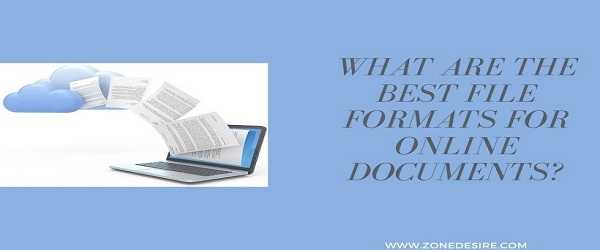One of the things you can do as a professional web designer is to learn about different file formats for documents so you can easily create documents on the web that are search engine friendly. Search engines work very well with PDF documents because this is one of the most common file types out there.
The same thing applies to businesses while handling day-to-day operations, typing, sending invoices, etc. The choice of document you use can determine how smoothly your workflow process would go. For instance, using MS Word to create a list of client’s emails might be more difficult than using an excel worksheet.
If you’re a business owner or just a regular computer user, here are different file formats you can write or save your documents in.
1. PDF
PDF, commonly referred to as Portable Document Format, was developed by Adobe Systems, Incorporated, as an application/shareware program, to present electronic documents, which includes graphics and text formatting, in a way independent of hardware, software, and different operating systems.
The format has grown enormously over the years as more people have begun to use computers for document storage. Currently, PDF is one of the most popular document formats, with millions of files distributed across the web using it.
If you’re new to using PDF, the very first thing that you’ll need to do is download and install the proper software for creating PDFs from scratch. A good place to start would be Microsoft Word, Publisher, or Adobe Acrobat, to name a few.
There are different tools you can use to change your documents to PDF file format in a matter of minutes. One of which is GogoPDF, with this file converter you can convert Word to PDF, XLS to PDF, PPT to PDF, and so on. The site has a simple interface and you only need to upload your file, make a few clicks and your PDF is ready to download.
You May Also Like – PDF Editor Online
2. Microsoft Excel
Microsoft Excel is a spreadsheet application developed by Microsoft for Windows, macOS, Linux, and Android. It comes with graphing, calculation, pivot tables, and a sophisticated macro programming language known as Visual Basic for Applications (VBA).
Excel can be used for a variety of things in your business such as creating worksheets for business intelligence, planning for sales campaigns, and much more. It is widely used in the workplace because of its ability to perform calculations quickly and automatically.
However, it does not have the same functionality as other spreadsheet applications such as Google spreadsheets, which is why many companies are choosing the Open Office suite of office applications.
3. PowerPoint Presentations
One of the widely used presentation software applications today, PowerPoint, can be converted to Microsoft Word file format.
With the Microsoft PowerPoint software, one can produce high-quality presentations, simply and intuitively. These presentations, which are often presented in meetings, can influence or persuade audiences. One can use PowerPoint to create slide transitions, as well as integrate files from files stored in different platforms such as the Internet, and in audio presentations, incorporate audio tracks.
Most people can create, edit and customize PowerPoint presentations with little or no knowledge at all. Whether one needs to present a technical or business presentation, using Microsoft PowerPoint is an easy and effective way to share information and make presentations for audiences of all skills and ability levels.
4. JPEG
JPEG is a very popular way of compressing digital images. The level of compression can also be varied, enabling a choose a trade-off between image quality and storage space. In essence, it compresses the file so much that the data will be very small in size.
JPEG uses the JPEG extension on file formats like gif, png, and pst. While some software compresses the file using libJPEG instead of using JPEG itself (due to incompatibility), JPEG generally offers better image quality because of the optimization of its compression algorithm. The compression, however, is not 100% efficient; as a result, some file formats may compress more efficiently than JPEG.
Despite its drawbacks, JPEG is widely used because it provides several benefits. First, JPEG allows for the compression of images without loss of data. Thus, one can save time when converting an image to a smaller file through JPEG. Furthermore, JPEG allows for image rotation and cropping, both during editing and the post-production stage.
Conclusion
Microsoft Word is still one of the most used document formats by computer users, we familiar with the software hence its exclusion from the list. Finding the best format for storing, keeping, or compiling your documents can take time. Feel free to work with every doc format mentioned in this article to choose which is best for you.
Note that different document serves a different purpose, for example, if you’ll like to post a guide for your product users on your website, PDF would be more appropriate than Excel. If you’re dealing with pictures then JPEG should be your go-to format and so on.
















